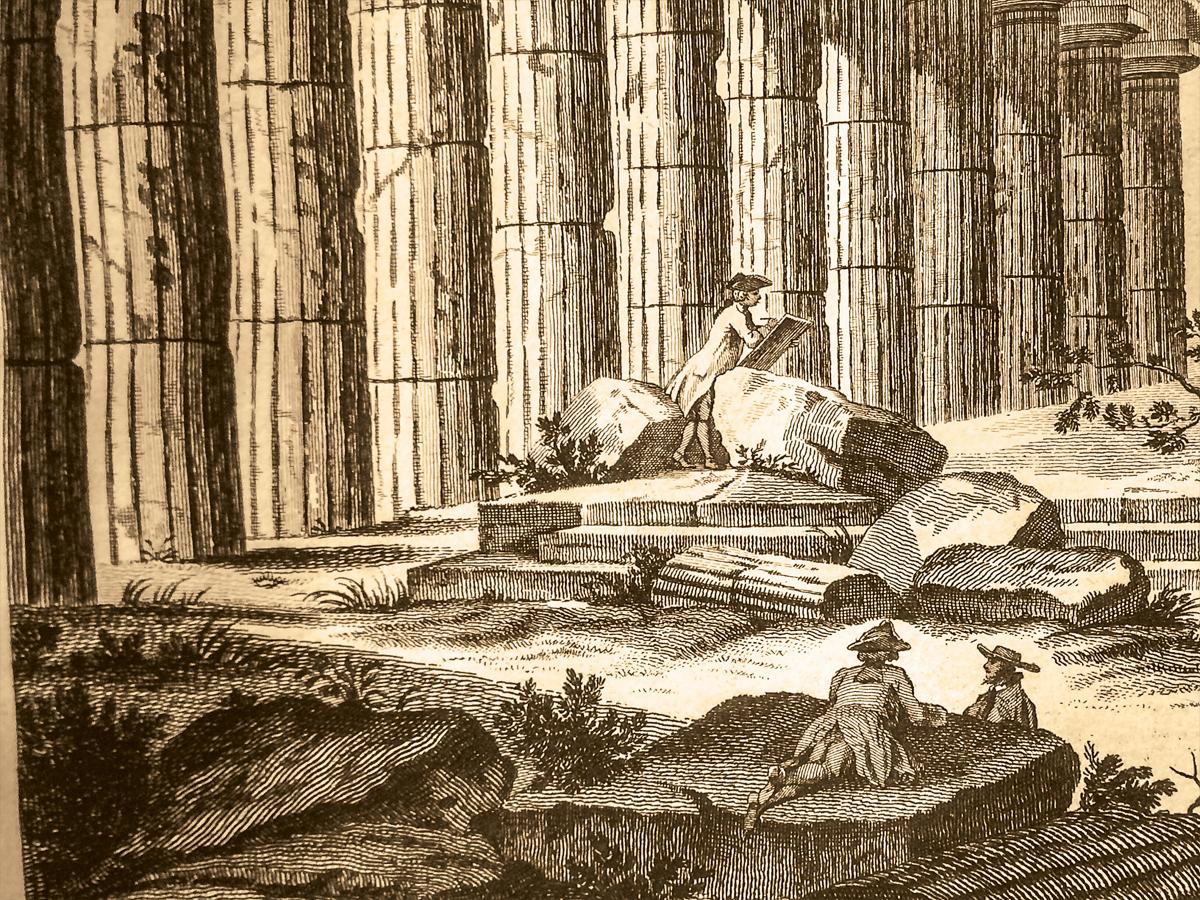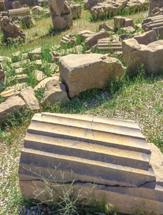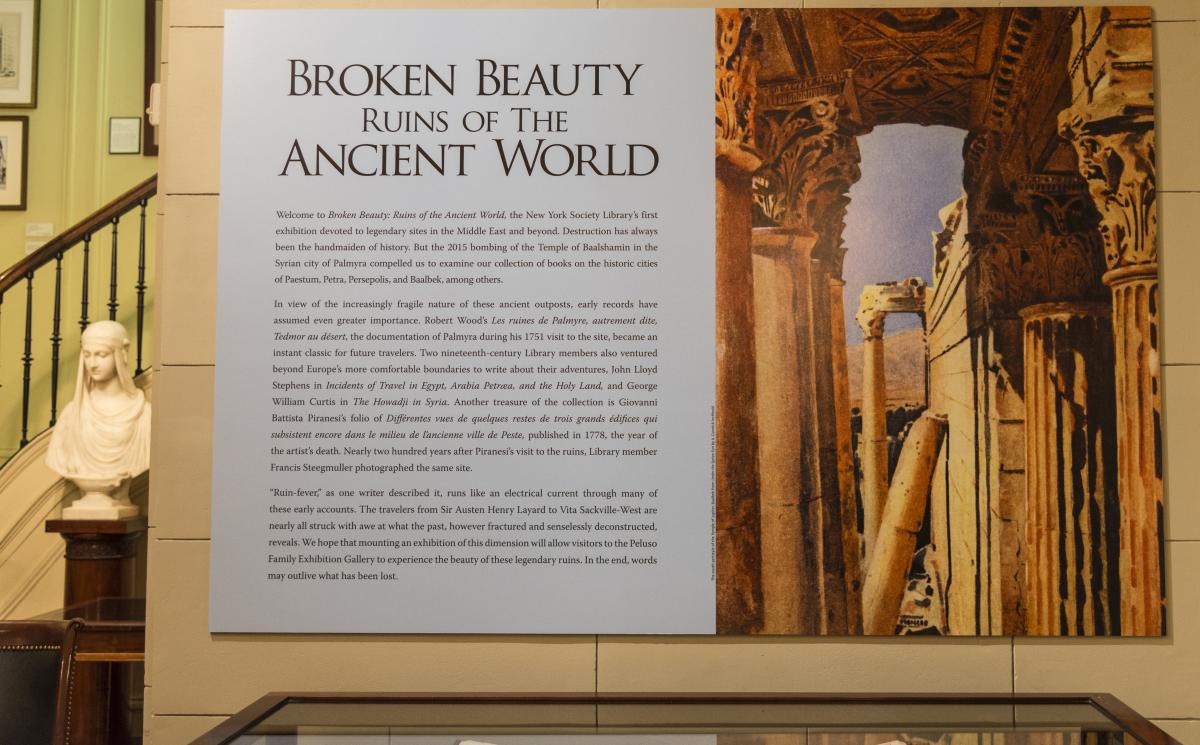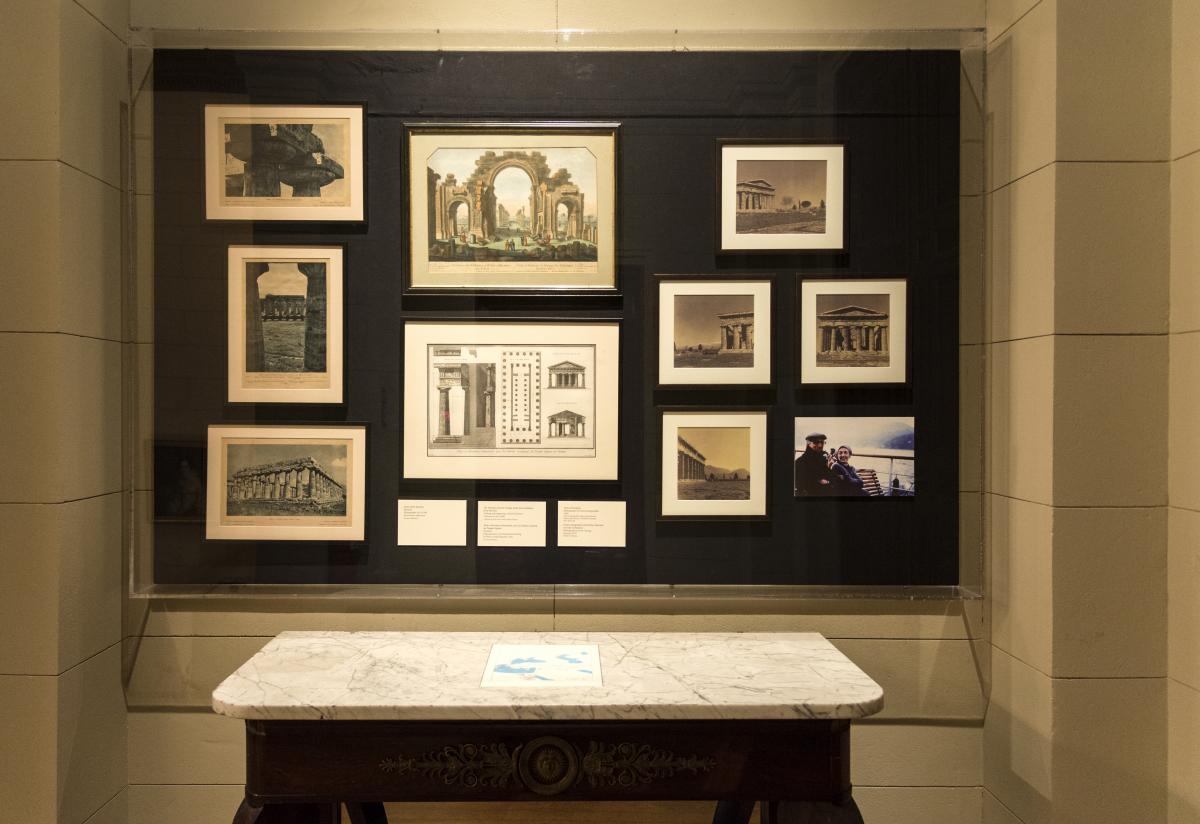Broken Beauty: Ruins of the Ancient World
Open to the public Thursday, November 17, 2016 - Thursday, August 31, 2017
Both Library members and nonmembers are welcome to visit the exhibition in The Assunta, Ignazio, Ada and Romano Peluso Exhibition Gallery any time the Library is open.
This compelling new exhibition focuses on the Library’s holdings of books devoted to historic sites in the Middle East and beyond. It was the 2015 bombing of the Temple of Baalshamin in the Syrian city of Palmyra that compelled us to examine our collection of books on the historic cities of Paestum, Petra, Persepolis, and Baalbek, among others.
The Library’s collection contains books written by eighteenth-, nineteenth-, and twentieth-century travelers to the Middle East from Cornelis de Bruyn and Sir Austen Henry Layard to Mark Twain and Vita Sackville-West. Les Ruines de Palmyra, Robert Wood’s documentation of Palmyra during his 1751 visit, became an instant classic for future travelers and today is consulted by archaelogists and historians seeking to reconstruct its legendary past. Accounts of ancient ruins were popular among early members, including John Jay and DeWitt Clinton. Two nineteenth-century Library members also ventured beyond Europe’s more comfortable boundaries. John Lloyd Stephens’ Incidents of Travel in Egypt, Arabia Petraea, and the Holy Land was published in 1838, George William Curtis’s The Howadji in Syria in 1852. One of the treasures of the Library is Giovanni Battista Piranesi’s 1778 folio Differentes vues de quelques restes de trois grands edifices qui subsistent encore dans le milieu de l’ancienne ville de Peste.
“Ruin-fever,” as one writer described it, runs like an electrical current through many of these early accounts. The travelers are nearly all struck with awe at what the past, however fractured and senselessly deconstructed, reveals. We believe that mounting an exhibition of this historic dimension will allow visitors to Broken Beauty to experience the beauty of these legendary ruins. In the end, words may outlive what has been lost.
The exhibition’s catalog, available for purchase for $10, includes an essay by author Andrew Oliver and recent images of Pasargadae and other sites in Iran by exhibition curator Harriet Shapiro.
Click on any image to see a larger version.

Giovanni Battista Piranesi (1720-1778)
Différentes vues de quelques restes de trois grands édifices qui subsistent encore dans le milieu de l’ancienne ville de Peste, autrement Possidonia
Rome: Francesco Piranesi, 1778
View of the Temple of Neptune is described in the text accompanying the engraving as “astonishing in its magnificence and grandeur.”
This volume was displayed for the exhibition's opening on November 16, 2016. Photo by Paula Berg

Inner view of the Temple of Poseidon, Paestum. Engraving from The Ruins of Paestum, otherwise Posidonia, in Magna Graecia by Thomas Major. London: T. Major, 1768.
This exhibition is supported by The Thomas E. Dewey Fund, The Hazen Polsky Foundation, and by a gift in memory of Susan Goodstein Lerner.
About the Peluso Family Exhibition Gallery



